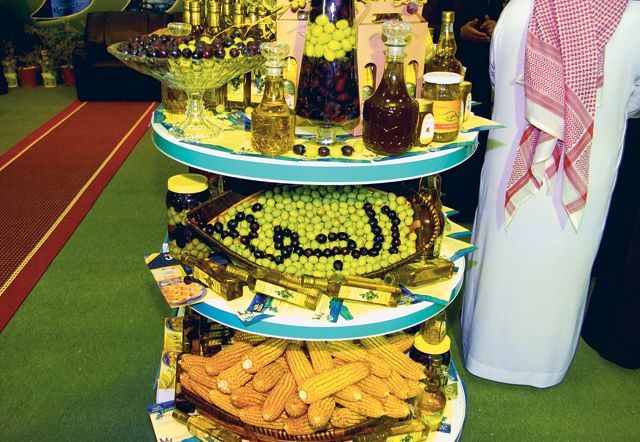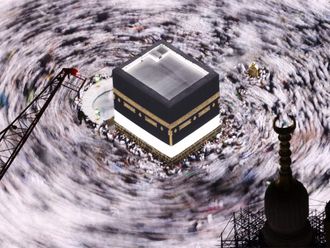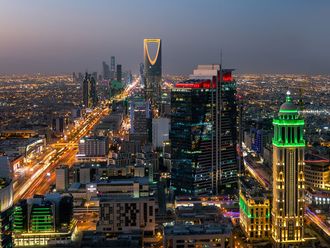Riyadh: The Governor of Al Jouf Province, Prince Fahd Bin Badr, has been highlighting the historical significance of the region with a special emphasis on its olive industry.
Al Jouf, located in the north-western part of Saudi Arabia, is deeply rooted in history and dates back more than 4,000 years. It enjoys one of the most unique, post-Islamic historical positions in Saudi
Arabia outside of the two holy cities. Al Jouf was a confluence for various cultures and successive civilisations.
This had given it a unique character, rich in the arts, folklore and dialects. The area is rich in both geographic and geological diversity and its lands are some of the most fertile in
the Kingdom. Prince Fahd Bin Badr has been playing a pioneering role in catapulting the stature of Al Jouf to regional and international arenas through relentless efforts to optimise utilisation of its tourism potential as well as the fertility of the soil, especially for growing olives.
There are more than 13 million olive trees in the region and more trees are being planted. Al Jouf contributes some 5,000 tonnes of olive oil and 2,700 tonnes of table olive to the global olive market.
Success
Prince Fahd Bin Badr has given top priority to the cultivation and production of olives. Following the resounding success of the olive festivals held during the last two years, a grand festival was opened recently
in Sakaka. In his opening speech, Prince Fahd Bin Badr announced plans to hold another festival in Doumat Al Jandal.
"The olive festival has effectively contributed to the economic activities of the region," he said while hoping that the annual festival would capture the imagination of Saudi citizens in the future.
"The annual festival was also aimed attracting visitors and businessmen from various regions of the Kingdom as well as from neighbouring GCC states," he said.
Prince Fahd Bin Badr shares the same view of Prince Sultan Bin Salman Bin Abdul Aziz, President of the Saudi Commission for Tourism and Antiquities (SCTA), in taking advantage of the Region's significance as one of the major tourism destinations in the Kingdom. SCTA is joining hands with the Tourism Development Council and other concerned agencies in the region in working out and implementing a tourism development strategy for the region.
Mohammad Bin Al Nasser, the mayor of Al Jouf city, said that a special olive oasis was nearing completion.
An olive city named Al Zaytoun is also being built in Al Jouf. Al Nasser who is also the president of the organizing committee of the Olive Festival, expected that the oasis would attract investments worth 500 million riyals (Dh489.76 million).
Speaking to Gulf News, the mayor described the festival as the turning point in modern day history of Al Jouf. "It will further highlight the historic and archaeological
significance of the region and its vast potentials in the economic, agricultural and
tourism sectors." A trade fair and household handicrafts fair are also being held on the sidelines of the Festival," he said.
Cradle of humankind
Al Jouf is home to some of the most important archaeological sites in the world. They tell a crucial part of the story of human development, both in the pre-and post-Islamic periods.
Al Jouf is Saudi Arabia's northern gateway linking Syria and Iraq with the Arabian Peninsula.
It is part of the cradle of the Nabatean and Assyrian civilisations. Dumat Al Jandal, the main oasis in the region, is one of the earliest recorded settlements in Arabia.
Archaeological monuments in the Region included Marid Fortress, which dates back to 2000BC, Al Hamra Palace and Al Ablaq Palace. Queen Zenobea, the ruler of Palmyra, was defeated here in 272AD, mainly by the solid castle walls.
This carefully restored castle still keeps watch over Dumat Al Jandal. For thousands of years some of the finest olives in the world have been grown in Al Jouf, and the local economy still relies heavily on agriculture — its fertile oasis yield fruit, vegetables and a uniquely flavoured olive.
Precise lines of carefully tended trees march across sandy hills, watered by the same aquifer which nourished the ancient farms that sustained the region's earliest dwellers. Now circles of modern agriculture also dot the desert in a vibrant green geometry.













